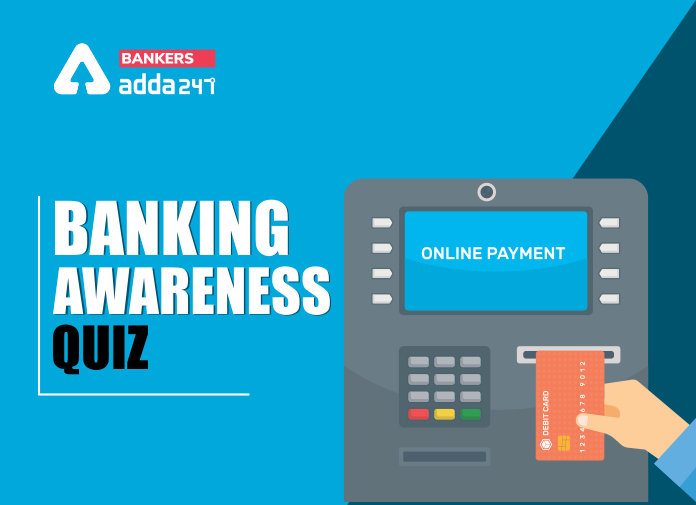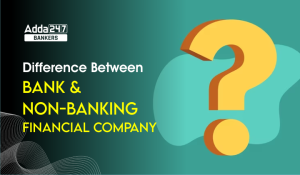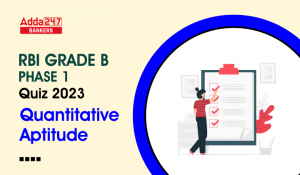Table of Contents
Q1. What is the full form of “NEFT”?
(a)National Electronic Funds Transmission
(b)National Electronic Funds Transaction
(c)National Electronic Funds Transfer
(d)North East Funds Transfer
(e) None of these
Q2. CBLO is a money market instrument that represents an obligation between a borrower and a lender. What does ‘B’ stands for in CBLO?
(a) Bond
(b) Balance
(c) Bailout
(d) Borrowing
(e)None of these
Q3. What is the full form of IFSC?
(a) Indian Financial System Code
(b) Indian Fiscal System Code
(c) International Financial Source Code
(d) Intra-Bank Financial System Code
(e) None of these
Q4. What is the full form of “AML”?
(a) Anti Money Liability
(b) Annual Mobility Linked
(c) Anti Money Laundering
(d) Association of Margin Lenders
(e) None of these
Q5. What is the full form of “KYC”?
(a) Know Your Credit
(b) Know Your Cash
(c) Know Your Customer
(d) Know your Category
(e) None of these
Q6. What is the full form of “IBA”?
(a) Insurance Board of Administration
(b) International Bank for America
(c) Indian Board of Administration
(d) Indian Bank Association
(e)None of these
Q7. What is the full form of “BBR”?
(a)Bankers Base Ratio
(b)Bank Base Rate
(c) Bankers Broadcast Resource
(d) Banking Base Ratio
(e) None of these
Q8. What is the full form of “SLR”?
(a) Standard Liquidity Rate
(b) Statutory Liquidity Ratio
(c) Simple Lending Ratio
(d) Statutory Liability Ratio
(e) None of these
Q9. What is the full form of “RTGS”?
(a) Real Time Gross Settlement
(b)Real Time Gross Subsidiary
(c) Real Time Gain Settlement
(d)Real Time Gross Scheme
(e) None of these
Q10. What is the full form of “NPV”?
(a) Net Present Value
(b) Net Present Validation
(c) Net Profit Value
(d) Net Past Value
(e) None of these
Practice More Questions of Banking Awareness for Competitive Exams:
Solutions
S1. Ans.(c)
Sol. National Electronic Funds Transfer (NEFT) is an electronic funds transfer system maintained by the Reserve Bank of India (RBI).
S2. Ans.(d)
Sol. CBLO stands for ‘collateralized borrowing and lending obligation’.
S3. Ans.(a)
Sol. The Indian Financial System Code (or IFSC) is an 11-digit alpha-numeric code assigned by the Reserve Bank of India to identify every bank branch participating in the payment system uniquely.
S4. Ans.(c)
Sol. Anti-money laundering (AML) refers to the laws, regulations and procedures intended to prevent criminals from disguising illegally obtained funds as legitimate income.
S5. Ans.(c)
Sol. KYC means Know Your Customer. KYC is the mandatory process of identifying and verifying the identity of the client when opening an account and periodically over time.
S6. Ans.(d)
Sol. Indian Banks’ Association (IBA), formed on 26 September 1946 as a representative body of management of banking in India operating in India – an association of Indian banks and financial institutions based in Mumbai.
S7. Ans.(b)
Sol. The Bank base rate is the minimum rate of interest that is set by a country’s central bank for lending a loan.
S8. Ans.(b)
Sol. Statutory liquidity ratio is a monetary policy tool that the Reserve Bank of India (RBI) uses to assess the liquidity at the banks’ disposal.
S9. Ans.(a)
Sol. The term real-time gross settlement (RTGS) refers to a funds transfer system that allows for the instantaneous transfer of money and/or securities.
S10. Ans.(a)
Sol. Net present value (NPV) is the difference between the present value of cash inflows and the present value of cash outflows over a period of time.



 Difference Between Banking and Non-Banki...
Difference Between Banking and Non-Banki...
 All You Need to Know About BASEL III Nor...
All You Need to Know About BASEL III Nor...
 Quantitative Aptitude Quiz For RBI Grade...
Quantitative Aptitude Quiz For RBI Grade...





